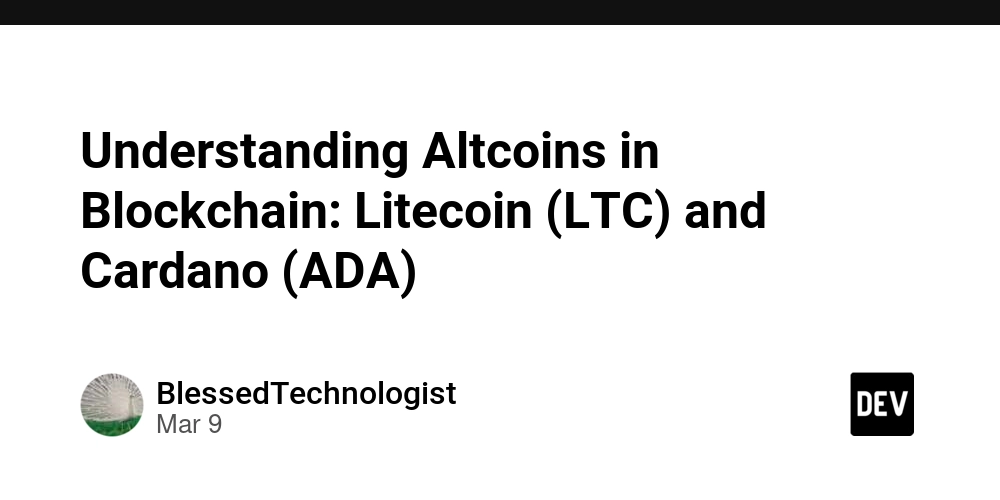Dev
1M
253

Image Credit: Dev
Understanding Altcoins in Blockchain: Litecoin (LTC) and Cardano (ADA)
- Litecoin (LTC) and Cardano (ADA) are significant altcoins in the evolving world of cryptocurrencies, each offering unique features and technological innovations.
- Litecoin, created in 2011 by Charlie Lee, is known for faster transaction times, the Scrypt algorithm, limited supply, SegWit implementation, and Lightning Network integration.
- Litecoin's use cases include peer-to-peer transactions, merchant adoption, and serving as a testing ground for Bitcoin innovations.
- Advantages of Litecoin include speed, efficiency, established reputation, and active development, making it a practical choice for users.
- Cardano, founded in 2017 by Charles Hoskinson, focuses on scalability, interoperability, and sustainability with Ouroboros PoS, layered architecture, formal verification, and governance model.
- Cardano's use cases range from decentralized applications (dApps) to identity solutions and supply chain management, showcasing its versatility.
- Energy efficiency, research-driven development, scalability, and a strong community are some advantages of Cardano in the blockchain space.
- The Ouroboros PoS algorithm in Cardano divides time into epochs and slots, emphasizing security, decentralization, and sustainability in the validation process.
- Litecoin and Cardano play distinct roles in the cryptocurrency market, with Litecoin focusing on transaction efficiency and Cardano on advanced technology for decentralized applications.
- Investors and users can benefit from the unique advantages of Litecoin and Cardano based on their specific needs, whether for quick transactions or sophisticated blockchain solutions.
Read Full Article
15 Likes
For uninterrupted reading, download the app